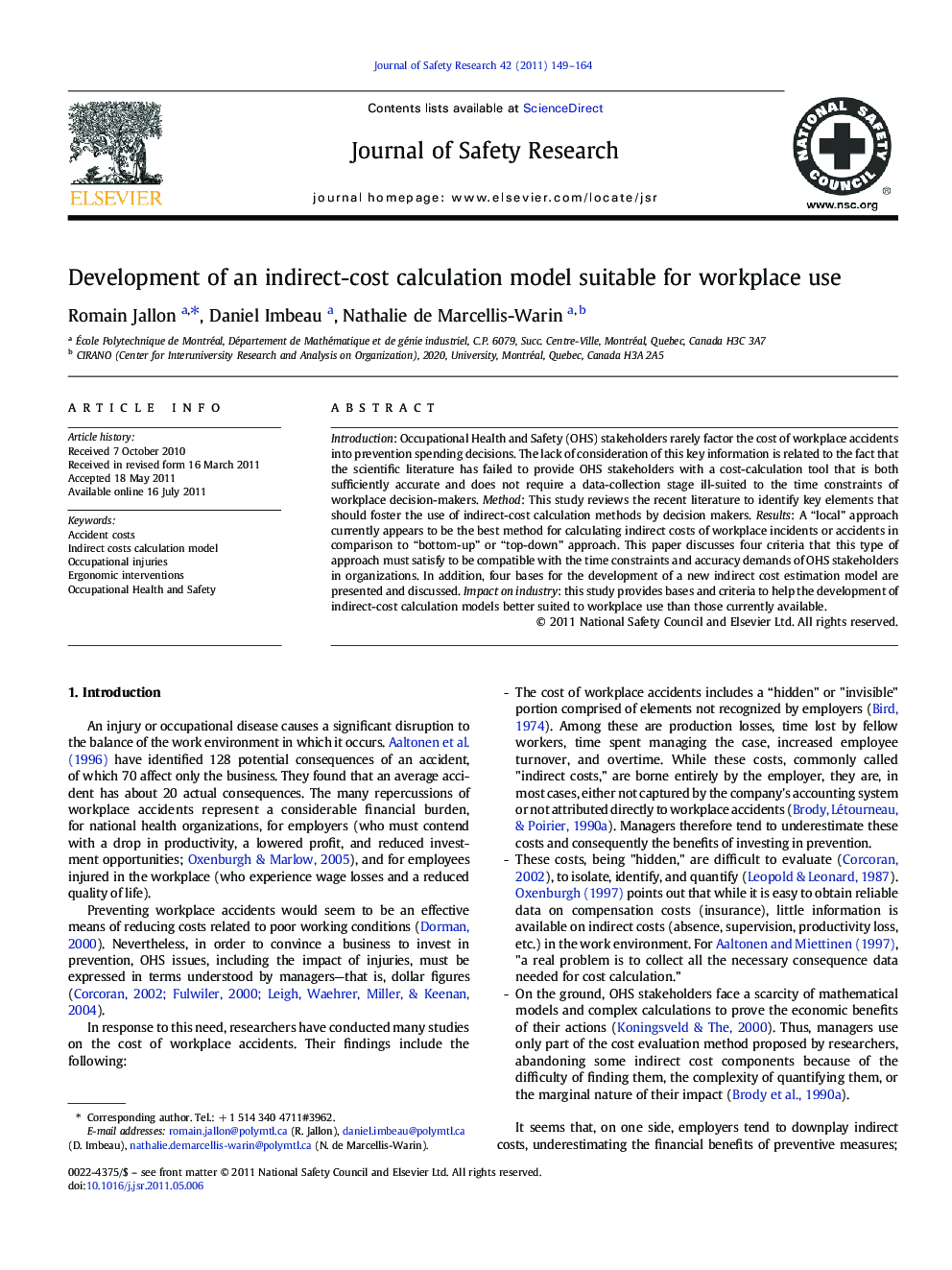| Article ID | Journal | Published Year | Pages | File Type |
|---|---|---|---|---|
| 587488 | Journal of Safety Research | 2011 | 16 Pages |
Introduction: Occupational Health and Safety (OHS) stakeholders rarely factor the cost of workplace accidents into prevention spending decisions. The lack of consideration of this key information is related to the fact that the scientific literature has failed to provide OHS stakeholders with a cost-calculation tool that is both sufficiently accurate and does not require a data-collection stage ill-suited to the time constraints of workplace decision-makers. Method: This study reviews the recent literature to identify key elements that should foster the use of indirect-cost calculation methods by decision makers. Results: A “local” approach currently appears to be the best method for calculating indirect costs of workplace incidents or accidents in comparison to “bottom-up” or “top-down” approach. This paper discusses four criteria that this type of approach must satisfy to be compatible with the time constraints and accuracy demands of OHS stakeholders in organizations. In addition, four bases for the development of a new indirect cost estimation model are presented and discussed. Impact on industry: this study provides bases and criteria to help the development of indirect-cost calculation models better suited to workplace use than those currently available.
► Evaluate the OHS indirect costs at workstation level. ► Consider variability of accident costs to target workstation with higher OHS costs. ► Group accident-related information into categories to limit data collection on costs. ► Accident consequences mapping to help better assess related costs.
